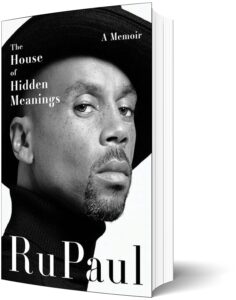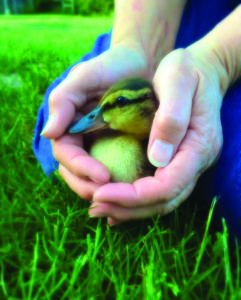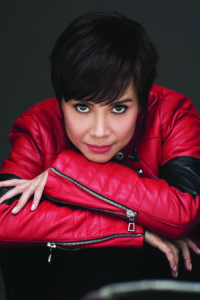You’ve likely noticed while watching RuPaul’s Drag Race that host RuPaul Charles rarely gets physically close to the contestants. Some of this is likely a Covid holdover, but the pronounced distance he maintains has spawned rumors that he isn’t hosting the show in person but is dropped in through some digital magic. That’s probably not true, but it is notable that pretty much every drag queen who has appeared on the show and is asked what RuPaul is like off camera gives the same answer: they don’t know.

RuPaul’s personal interaction with contestants during or after filming is minimal to the point of nonexistence. The nurturing mentor you see lifting up all those tortured psyches on television is a carefully curated construct that exists only in front of the camera. Every public glimpse seems to exist solely for the sake of branding and monetization. That same sense that you’re seeing RuPaul but also not really seeing him is pervasive in his new memoir, The House of Hidden Meanings (HarperCollins, 2024).
Every superhero or sustainable global brand needs a good origin story. Ideally, that story will show how the superhero grew into his superpowers and learned to use them for good. The House of Hidden Meanings is RuPaul’s origin story. In it, his early years as a disadvantaged and disaffected youth in suburban San Diego are remembered as a waiting period for the fame and fortune that he knew would surely come. A psychic had told his mother while she was pregnant that her child would grow up to be famous.
Once he learns of this prophecy, he clings to it and refines it, foreseeing his fame specifically on television. The setup allows RuPaul to look backward at otherwise mundane experiences and imbue them with mystical elements of predestiny. He tries to spin a childhood spent dodging school and getting high as a road he had to take, falling into trouble so that he can eventually pull himself out of it.
The book’s title has a deflating explanation. It’s taken from a meaningless offhand comment from a friend while they were high on marijuana as young teenagers. “After the drugs wore off, I realized it was nonsense,” he writes. “But it was beautiful nonsense, and it stayed with me forever, maybe because I liked the way it sounded.”
Then, as if knowing that might disappoint, he tries out a different idea: “Or maybe it was because of how I saw myself,” he writes, “as a detective of the universe, searching the house for clues, trying to understand what it all meant.”
What’s most striking about his story is that it isn’t about a boy who wanted to be a drag queen but about a boy who believed it was his right to be famous and stumbled from one half-baked idea to another until fame found him.
Childhood was an unstable time for young RuPaul. His parents’ marriage was marred by violent bursts of fighting. His father, Irving Charles, was a charming philanderer not committed to raising children. When RuPaul suspects that his father wants to interrogate him about being gay, he prepares a savage retort delineating his father’s parental failures, which succeeds in shutting the conversation down. After this incident, his father is referred to only in passing. His mother, Ernestine, who went by “Toni,” was known by the children in RuPaul’s neighborhood as “mean Mrs. Charles.” As RuPaul tells it, she was as likely to greet you with “Who the f— are you?” as with “Hello.”
In one particularly harrowing incident, his mother threatens to set fire to his father’s convertible and goes so far as to pour gasoline on it and stand over it with a book of matches in hand while RuPaul and the neighbors look on. In hindsight, such events affected RuPaul more than he realized at the time. He now understands that what he saw that day caused him to dissociate from himself. Taking drugs became a way of trying to get back to a self that existed before those traumas.
Although RuPaul describes himself as an awkward, effeminate child, he did not suffer the slings and arrows of bullies the way many LGBTQ people have. Instead, he felt he was under a sort of divine protection. He writes about just one encounter with a neighborhood bully: “I met him outside his class and threw the first punch. He hit me back, and the ring he was wearing slashed the skin below my left eyebrow, drawing blood. We were quickly broken up. It remains the only event of childhood violence I can remember. I was protected, as if by some unseen force, but in that protection too, I was often lonely.”
Once he’s introduced to alcohol and mind-altering substances, RuPaul quits school and dedicates himself to happiness as a full-time pursuit. “I had to be motivated by joy,” he writes. “By colors, music, laughter, dancing, and creativity — all the things that made life worth living.”
One of those things was cars. It’s a fascination that perhaps shouldn’t seem like such a surprise: car culture was a big part of life in San Diego in the 1970s. RuPaul’s brother-in-law starts a business of finding vintage cars for sale around the country and then buying and flipping them to customers in California. He enlists the teenage RuPaul to fly to pick up the cars and drive them back across the country.
“I’d stop at a truck stop or gas station, collect a speeding ticket from a good-natured highway patrolman, eat a fast-food burger, look up at the sky,” he writes. “Most of the cars had sunroofs, which I’d leave open all night. In the middle of the desert, with no other cars around, no other people around, looking toward the stars — that was a rare kind of magic. And there I was, sailing ahead, down a dark highway, knowing that I would find my way home.”
Despite its frequent opacity and cheesiness, The House of Hidden Meanings is still a captivating read. I enjoyed the book as I enjoy all things RuPaul. It’s a new entry in the ongoing evolution of RuPaul mythology, and I’m here for it.
So here for it, in fact, that I downloaded the audiobook read by the author himself. He’s a terrific narrator, and for fans who like to imagine they’re friends of Ru and have been invited into his company, it’s a great listen. The book is a faster read than the nearly six hours of the audiobook, though, and it has pictures. Not the full-color stage-ready ones you’re used to, but the black-and-white family-album kind.
Either way, if you’re like me — the type to accept whatever Ru is offering — you’re going to enjoy yourself.


